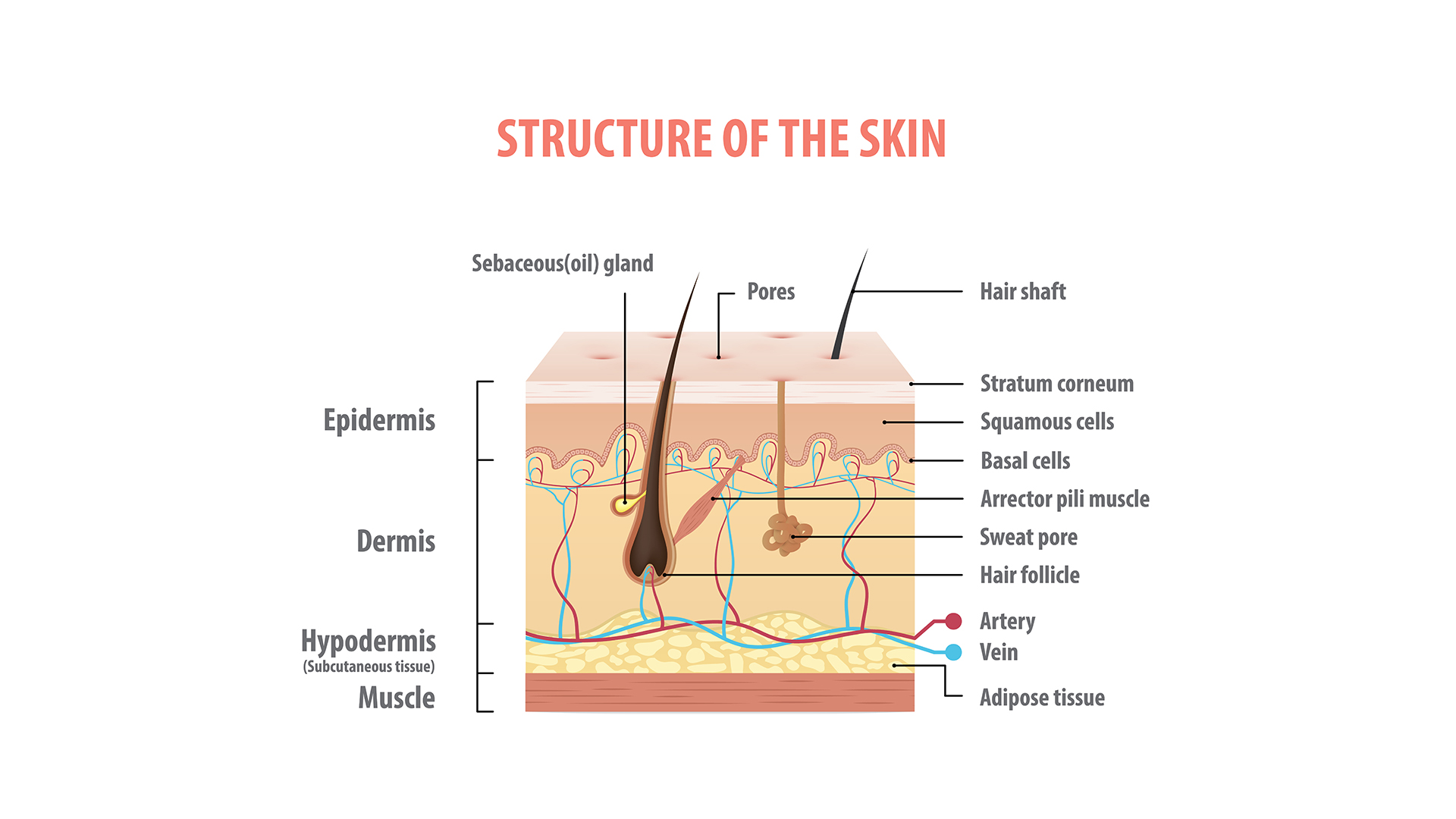
Wrinkles are a telltale sign of aging, but not everyone develops them at the same rate. Some people get their first wrinkles in their early 20s, while others may boast a smooth-faced, youthful look well into old age.
So why do wrinkles form, exactly?
There is no single answer to this question, because human skin is a complex organ and many factors can affect its appearance, Dr. Debra Jaliman, a board-certified dermatologist based in New York and a member of the American Academy of Dermatology, told Live Science.
The skin is composed of multiple sheets of tissue divided into three layers: the epidermis on top, the dermis in the middle, and the hypodermis at the bottom. The dermis is much thicker than the epidermis and the hypodermis, as it contains nerves, blood vessels, sweat glands, hair follicles and proteins that support the skin's overall structure. Specifically, it's mostly made up of the fibrous proteins collagen and elastin, which are suspended in a gooey matrix.
Related: Why does hair turn gray?

Wrinkles start to appear as these structural components of the dermis start to degrade, a process broadly known as skin aging. However, exactly when the age-related creases develop depends on a combination of factors, including a person's genetics and lifestyle, Jaliman said.
In general, as we get older, the number of cells in the skin that produce collagen and elastin, known as fibroblasts, begins to decrease and the remaining fibroblasts become less productive, Dr. Ginni Mansberg, a Sydney-based primary care physician and the medical director of Evidence Skincare, told Live Science by email.
In addition, with age, existing structural proteins in the skin are broken down by enzymes at a higher rate than they were in the past. Aging also causes the top layer of the skin's epidermis, called the stratum corneum, to become thinner. This structural shift makes it more difficult for the skin to retain moisture, and dry skin makes any wrinkles more visible, Mansberg said.
Another aspect of aging that may drive wrinkle formation is cellular senescence — a zombie-like state damaged cells enter when they don't die off when they normally would. Instead of being removed or repaired, more of these zombie cells accumulate in the skin with age, releasing chemicals that can fuel the degradation of skin's structural components.
The overall number of senescent cells in the body increases with age, but that's not the only factor that can lead to this shift. Senescence can be triggered by inflammation and DNA damage, for example, according to a 2021 review published in the journal Ageing Research Reviews.
The rate at which aging drives wrinkle formation depends on additional factors, such as our genetic makeup.
"For example, people with lighter skin tones will find that their skin ages faster than people with darker skin," Jaliman said. That's because the same genes involved in skin color can also influence the skin aging process. This is partly due to genes related to the protective skin pigment melanin, but also genes that contribute to wrinkles through melanin-independent pathways that are not yet fully understood, according to a 2022 review in the journal Scientific Reports.
Unlike genetics, some factors that contribute to wrinkle formation are within our control. For example, excessive sun exposure can accelerate skin aging, because the sun's ultraviolet rays cause inflammation and DNA damage in skin cells, Mansberg said. This can drive not only wrinkle formation but also skin cancer, which is why sunscreen is so important.
Being exposed to air pollution and smoking cigarettes can also fuel the formation of wrinkles by inducing oxidative stress, a state of imbalance between cells' production and elimination of harmful molecules called free radicals, Jaliman noted.
Free radicals are byproducts of the breakdown of oxygen in the body. If they are not counteracted by antioxidants, either produced in the body or ingested, these highly reactive particles can damage the skin's structural components. Therefore, a diet rich in foods that contain high levels of antioxidants, such as fruit and vegetables, may somewhat help to slow the formation of wrinkles, Jaliman said.
However, you are bound to get wrinkles eventually, regardless of what you eat or what cosmetics you use to slow down the aging process.
This article is for informational purposes only and is not meant to offer medical advice.
Ever wonder why some people build muscle more easily than others or why freckles come out in the sun? Send us your questions about how the human body works to community@livescience.com with the subject line "Health Desk Q," and you may see your question answered on the website!







